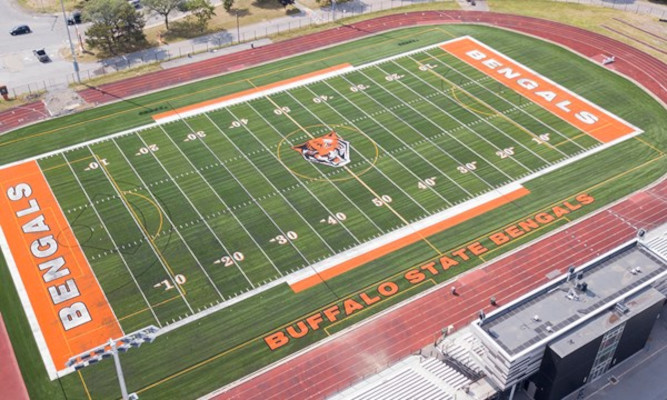How Buffalo became one of the most racially segregated cities in America
October 28, 2021
Buffalo, New York is one of the most racially segregated metropolitan areas in the United States.
White people are 76% of the Erie County population but only 45% of the City of Buffalo population.
Black people are 13% of the Erie County population but 37% of the City of Buffalo population.
White people are overrepresented in the suburbs. This is due in part to racial zoning policies in the early 1900s.
Buffalo was a hub for steel jobs during World War I. During this time, African Americans rapidly fled the South to the North for better economic opportunities.
Black people largely resided in the white working class districts of Lovejoy and South Buffalo.
This resulted in tensions between the two races, which sometimes led to violent conflicts.
In order to curb migration to these neighborhoods, racial zoning laws were implemented.
Racial zoning, also known as exclusionary zoning, was a practice where purchase of homes outside same-race neighborhoods were prohibited.
This led to mass evictions of many Black people from their homes, leading to the creation of ghettos, where African Americans were cordoned to, away from economic prospects.
These were enshrined into law and enforced in many parts of the United States at the time, until the Supreme Court banned its practice in 1917.
When explicit racial zoning was declared unconstitutional, restrictive covenants took its place.
Developers would constantly include in the deed that a house could not be sold to anyone other than white people.
The original intent behind covenants was to enhance property values by controlling the production. This warded off commercial projects, and protected the cultural aesthetic of the neighborhood.
This coincided with the rise of sundown towns, where non-white persons were threatened with harassment and violence if they stayed in a certain area after sunset.
North Tonawanda was a sundown town, and had a sundowner sign up until 2020.
Racially restrictive covenants were considered private contracts when the Supreme Court upheld their constitutionality in Corrigan v. Buckley in 1926, which meant these agreements would be protected and enforced by law, without interference from the state.
During the Great Depression, New Deal policies meant to support the struggling citizens also had a racial condition to them.
The Fair Housing Act had a clause named “prevailing composition”, which required residents of new federally funded housing to be the same race as those around them.
For Buffalo, Willert Park became an all-Black public housing development. This formulated the image of the East Side as Buffalo’s Black neighborhood. With little political representation, the concerns of residents of Willert Park were rarely listened to.
Blockbusting is another tactic where blockbusters purchase homes bordering between white and black neighborhoods, and sell them above market value to Black residents.
The blockbusters would then go to the white homeowners in the area, and convince them to sell their home at a lower price and move because their neighborhood was turning into a black ghetto.
The property lost value, and the Black residents were stuck again, as they wanted to leave the abject poverty and urban decay of where they came from.
Redlining was a practice where certain areas of the city where denied mortgages for homes, despite the Black neighborhoods earning the same or similar income as White neighborhoods.
The consequences for the residents in redlined districts included being charged more for insurance, and lack of updated housing, leaving residents susceptible to lead poisoning.
This was because banks considered these neighborhood too risky to lend to.
This continues the perpetuation of poverty, which transfers over to education.
Only one quarter of city school students score high levels for reading and math. The numbers are lower for people of color.
This is also shown in transportation projects which cut access to healthcare, jobs, and education, and the loss of property.
The Kensington Expressway. is an example where an expressway was created, cutting through a predominantly Black East side of Buffalo. This was meant to expedite commutes to the city for suburban residents.
Nearly 600 families were displaced, and moved in the Glenny Drive Apartments Housing Project on Fillmore Avenue.
The abandoned homes and business created a refuge for criminals, leaving residents vulnerable to lawlessness.
Racial inequality may have less influence, but income inequality has widened, and has made neighborhood conditions worse by the day.
Even with the recent progress Buffalo has made in jobs, landscaping, and education, certain areas, like the East side, never see this growth.





Tracy Stevens • Jun 26, 2022 at 12:12 pm
It is Sick!!
Minorities should leave the city and let them do the jobs the minorities do. Also- many of their jobs are to oppress minorities- they would lose those jobs.
I jope people decide to own their own businesses, go to college or trade school and leave Buffalo NY.
Berlynn • Jan 17, 2022 at 9:55 am
Went to try and rent a ho.e in tonowanda and was turned away when it was realized I was african american sad isn’t it.